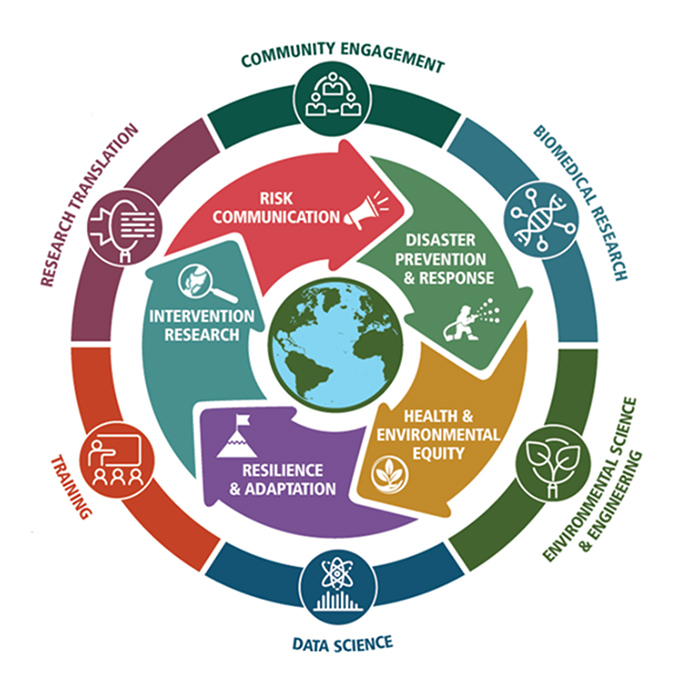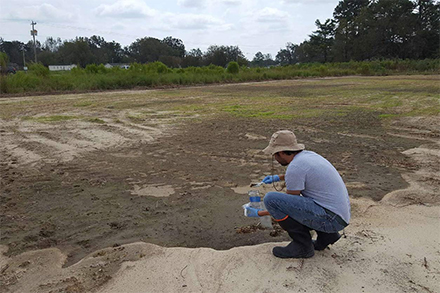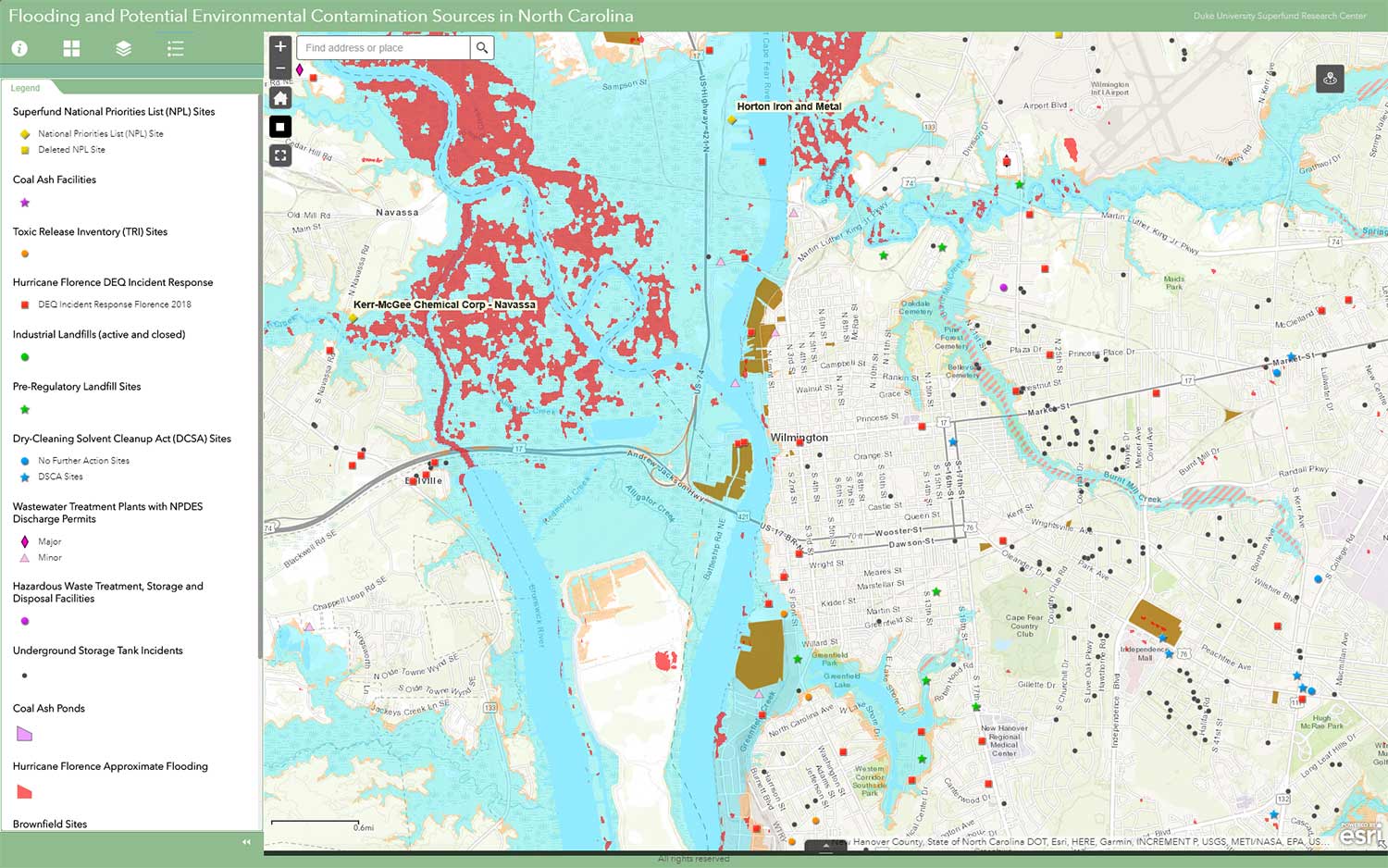By Laura Kiesel

This diagram shows the many ways in which the Superfund Research Program and its grantees help promote climate change resilience. (Image courtesy of NIEHS Superfund Research Program)
Through multidisciplinary, solutions-oriented research, the NIEHS Superfund Research Program (SRP) promotes resilience to climate-related disasters and the health effects of climate change. The NIEHS Superfund Research Program (SRP) supports research across disciplines to address complex environmental health concerns, including climate change. By integrating biomedical and environmental science and engineering research with outreach and training, NIEHS-funded scientists are promoting resilience and health among affected communities.
SRP grantees conduct research to protect the public from hazardous substances, such as volatile organic contaminants and heavy metals, found in Superfund sites and other contaminated sites across the U.S. The changing environmental conditions caused by climate change can alter the distribution and toxicity of the chemicals in these sites. Exposure to these substances is associated with numerous adverse health effects, including cancers, cardiovascular disease, kidney disorders, reproductive issues, and diabetes. More than 60 million people across the U.S. live within 3 miles of a Superfund site. Thus, mitigating the impacts of climate change on contaminated sites is crucial for protecting public health.

"Changes to environmental conditions and water patterns can affect the chemical composition of harmful contaminants, potentially making them more toxic. As we see more extremes in temperatures and precipitation, the way in which people are exposed to harmful contaminants is also likely to change," said Michelle Heacock, Ph.D., acting director of the Superfund Research Program. "It is a priority for SRP to understand how these changes and complex interactions will affect human health."
Promoting Community Resilience
"SRP grantees are always looking for strategies to reduce exposure," says Heacock. "Building on their SRP-funded research, our grantees are developing new robust and effective prevention and mitigation methods and tools to protect communities from harmful exposures."
For example, a team at the Texas A&M University (TAMU) SRP Center developed a green infrastructure toolkit, called Adaptive Stormbox, to address the needs of residents in Galena Park, a city in Texas that is home to several large industrial complexes. The city has faced flood damage and contaminant release from the many hurricanes and storms that have hit the U.S. Gulf Coast. Adaptive Stormbox provides green infrastructure models for both residential and commercial infrastructure to reduce flooding and contamination. The TAMU SRP Center is entirely focused on disaster response and climate change.
Multidisciplinary Research Tackles Climate Change
Former SRP Director William Suk, Ph.D., who retired in December 2022 after 35 years with the program, announced SRP's newly published commentary describing the program's contribution to climate change-related research during SRP's Climate Change and Health webinar series.
According to Suk, the commentary outlines how SRP's multidisciplinary, systems-focused approach can be used to help overcome the challenges from climate change and pivot to additional needs as they arise.
The three-part Climate Change and Health webinar series, showcased how SRP combines research and data across disciplines, cutting-edge tools, and community engagement to better understand how climate change can increase the risk of harmful exposures and how to reduce that risk to protect human health.
SRP hosted a Risk e-Learning webinar series focused on scientific research and tools that can be used to promote health and resilience to climate-related disasters, and speakers covered topics ranging from the complexities of contaminant toxicity to strategies and models for building disaster resilience in communities.
Global Lens of SRP and Vision for the Future
Though SRP funds U.S.-based researchers, the program is also interested in applying findings to a global scale.
According to Heacock, there is an innate global health lens in the program because exposures do not stop at a country's border. She explained that some contaminants can easily travel from the eastern hemisphere to the western hemisphere and anywhere in between.
"SRP research efforts in the U.S. can be translated to regions all across the globe," Heacock explained. "In fact, our recent commentary outlines how SRP's multidisciplinary approach can be used as a model by research programs around the world to understand the effect of climate change on contaminant exposures and health."

Duke’s mapping tool raises awareness about chemical contaminants that may enter the environment during a flood and can inform decisions to prevent potential harmful exposures. (Photo courtesy of the Duke University SRP Center)
"As the threat of climate change increases, SRP teams across the U.S. are well positioned to adapt their research to find solutions to emerging environmental health concerns," Heacock said. "Grantees also continue to engage directly with communities who may be affected by climate change and environmental contamination to develop mitigation and adaptation tools."
To learn more about what SRP grantees study, how harmful chemicals are dispersed during climate disasters, and how they can affect people's health and well-being, see this SRP fact sheet (2MB) .


